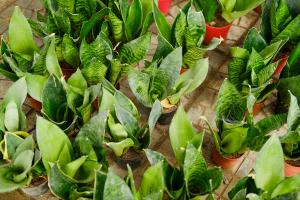How to Revive a Dying Rubber Tree Plant
The rubber tree, also known as Ficus Elastica, is a tropical plant that is easy to take care of and adds an elegant touch to any indoor space. However, even the most attentive plant owners may sometimes face the challenge of reviving a dying rubber tree plant. Here are a few steps you can take to bring your rubber tree back to life:
Assess the Problem
The first thing you need to do is figure out why your rubber tree is dying. There are several reasons why this might be happening:
Lack of water: Rubber trees need to be watered regularly to survive. If the soil is dry or if the plant hasn't been watered in a while, it could be the reason your rubber tree is dying.
Too much water: Overwatering can also cause a rubber tree to die. Make sure the soil is well-drained and that the pot has proper drainage holes to avoid drowning your plant.
Insufficient light: Rubber trees need bright, indirect light to thrive. If your plant is not getting enough light, it may start to wilt and eventually die.
Cold temperatures: The rubber tree is a tropical plant that prefers warm temperatures. If it is exposed to cold drafts, it can suffer from cold damage and eventually die.
Pests or disease: Pests like spider mites or scale insects can attack your rubber tree and cause it to die. Diseases like root rot or fungal infections can also damage the plant.
Reviving a Dying Rubber Tree Plant
Once you have identified the problem, it's time to take action to revive your rubber tree plant:
Watering
If lack of water is the problem, you need to water your rubber tree immediately. However, if you have been overwatering your plant, you should wait until the soil has dried out before watering it again. To avoid overwatering, only water your rubber tree when the top inch of soil feels dry to the touch.
Lighting
If your rubber tree is not getting enough light, you can move it to a brighter location. However, make sure to avoid direct sunlight, as this can burn the leaves. A north-facing window is a good spot for a rubber tree, as it will get bright, indirect light.
Temperature
If cold temperatures are the problem, move your rubber tree to a warmer spot, away from drafts or air conditioning vents. The ideal temperature range for a rubber tree is between 60°F and 75°F.
Pests or Disease
If pests or disease are the problem, you need to take immediate action to treat your rubber tree plant. You can use insecticidal soap or neem oil to get rid of pests like spider mites or scale insects. For diseases like root rot or fungal infections, you may need to prune affected leaves or even repot your plant to prevent further damage. It's important to remove any dead or dying leaves or stems from your rubber tree, as they can attract pests or contribute to the spread of disease.
Tips for Maintaining a Healthy Rubber Tree Plant
Prevention is always the best medicine, and there are several things you can do to ensure that your rubber tree stays healthy:
Water your rubber tree regularly, but don't overwater it.
Make sure the pot has proper drainage holes and that the soil is well-drained.
Provide your rubber tree with bright, indirect light.
Keep your rubber tree away from cold drafts or air conditioning vents.
Inspect your rubber tree regularly for signs of pests or disease and take immediate action if you detect any.
Prune your rubber tree regularly to encourage new growth and remove any dead or dying leaves or stems.
Reviving a dying rubber tree plant can be a challenge, but with the right care and attention, your plant can make a full recovery. By identifying the problem and taking immediate action, you can bring your rubber tree back to life and enjoy its beauty for years to come.

 how many times do yo...
how many times do yo... how many planted tre...
how many planted tre... how many pine trees ...
how many pine trees ... how many pecan trees...
how many pecan trees... how many plants comp...
how many plants comp... how many plants can ...
how many plants can ... how many plants and ...
how many plants and ... how many pepper plan...
how many pepper plan...































